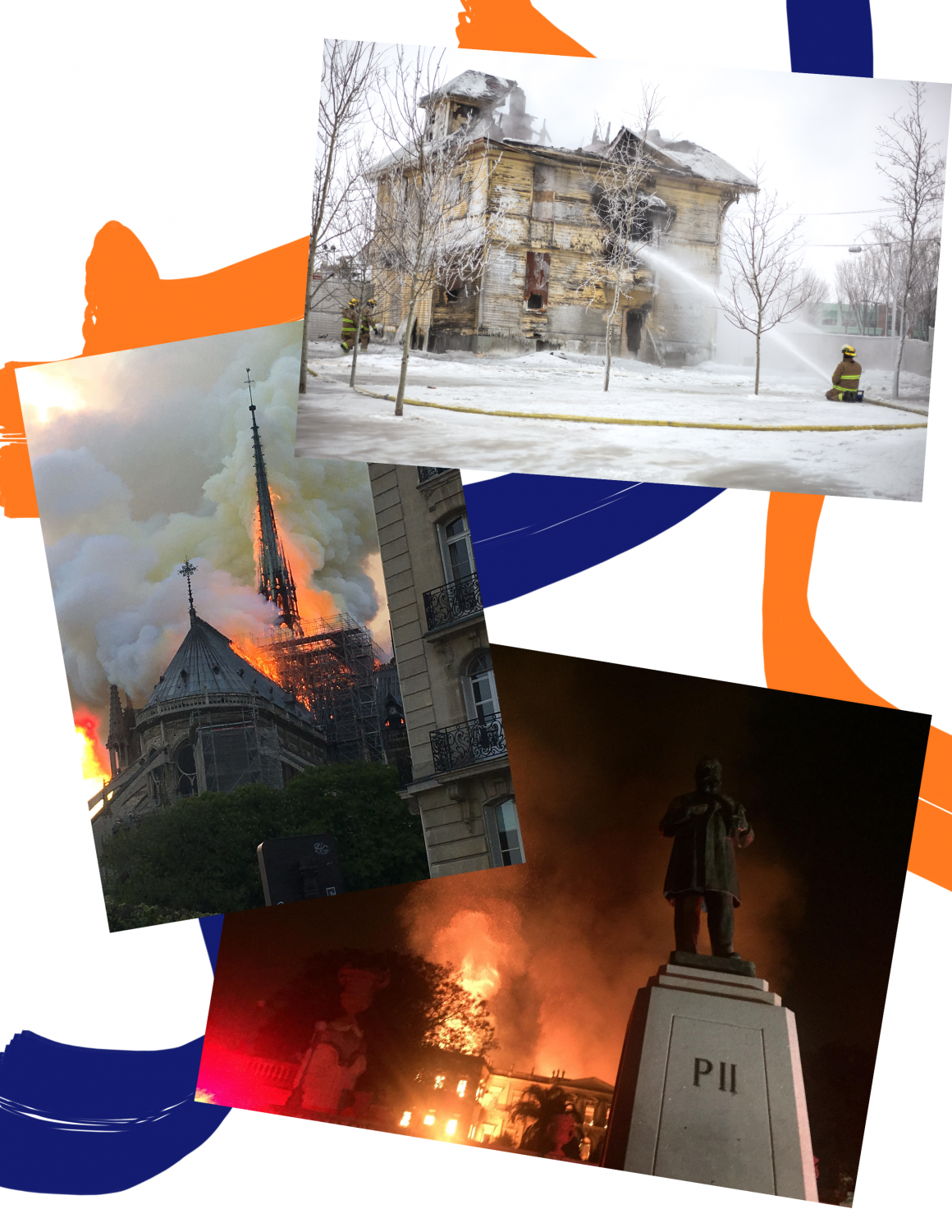
Destruction of historic sites warrants emotional response
By Cristina Paolozzi, April 23 2019 —
As I scroll Twitter, watching the video capturing the moment where thick smoke and flames engulf the spire of the Notre Dame cathedral, I feel sick.
The spire falls. The smoke continues to rise. I feel worse.
The bite-sized updates provide good news, but they don’t make me feel better: “Both towers of the cathedral are safe,” “North rose window appears to have survived,” “Main structure safe and preserved.” The image of the iconic Parisian skyline is marred by the heavy clouds surrounding one of the oldest and most recognizable churches.
It was equally moving when the blaze in Rio de Janeiro in 2018 destroyed much of the irreplaceable collections in the National Museum of Brazil, a 200-year-old building. These works included research on traditional Indigenous cultures in Brazil, especially concerning Indigenous languages. The updates following this tragedy were less optimistic and the damage done to the site was devastating.
And back in February 2019, the historic Enoch house in downtown Calgary was consumed by flames. With so few historic sites in Calgary, this loss symbolized a larger disconnect with the story of this city and the physical ties to that story.
All of these examples revolve around the disappearance of important historical sites. It’s interesting to note how quickly responses to these disasters turn emotional. I have only ever visited the cathedral once, only caught a handful of glimpses of the Enoch house in passing and have never even been to South America, let alone enjoyed the rich culture that the National Museum of Brazil had to offer. Yet my reaction to all of these incidents remains as if I knew the sites personally or they had been a part of my life for years.
How could I be so sad and upset for stone walls or wooden roofs whose only real claim to fame was the fact that they had survived on this planet for a considerable amount of time? Why not be more concerned for people, communities or families who are going through a tangible struggle, some of whom are equally as distant from me as those landmarks?
Maybe it’s because I am an emotional person, maybe it’s because I am not good at dealing with change or maybe it’s because these sites hold meaning and value to people all over the world. Human nature permits us to see beauty and elegant design and allows us to internalize stunning works of art as reflections of what we see as truly breathtaking. To see plumes of smoke rising from Notre Dame was to also see the destruction of hundreds of years of human innovation that spoke to what society recognized as sacred.
Notre Dame, the National Museum of Brazil, the Enoch house — these are all structures which hold a mirror up to the past and shows us the image of what we used to be. To ignore the sentiment behind these places is to firmly and securely shut the door to our collective past behind us and to utterly abandon the world that we study. And, realizing that I sound positivist and teleological in my approach, I can’t help but feel as though the study of progress — whatever that means — should hold some significant place in the way in which the world is studied.
History should be recognized as being made up of random and circumstantial events, so it is difficult to argue a place for a constructed and progressive human story. But sometimes it helps to explain how connected I feel to these historical buildings while a 13th-century roof caves in.
